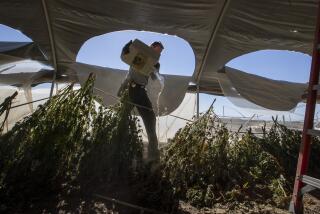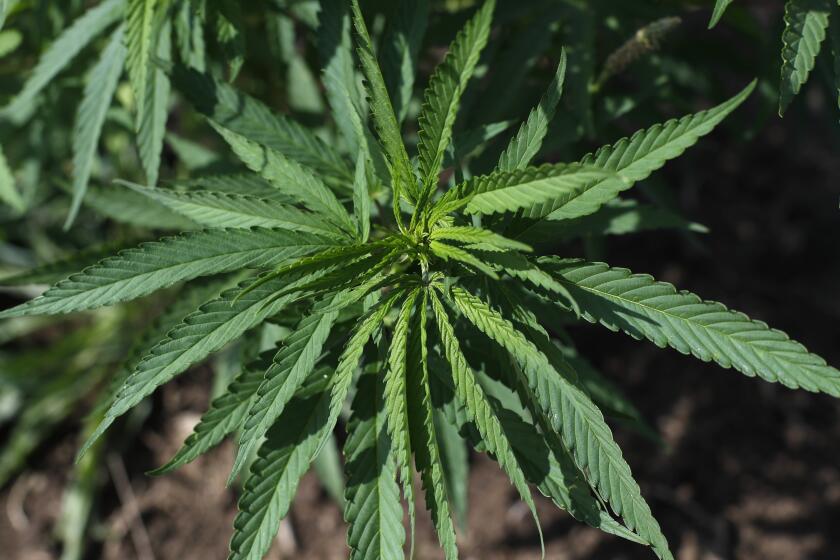Just Say Maybe
A couple of months ago I was at a Hollywood party--except it was in Silver Lake--when two attractive, daughter-aged women came in with a large trash bag, which turned out to contain about three pounds of extremely exotic, highly fissile marijuana. They dumped the bag out on a coffee table right in front of me.
The party, a rather listless affair until then, perked right up.
I will spare you my college daysâ dope-alogue. Suffice to say this wasnât the most ganja Iâd ever seen in one place, by about 1,000 pounds. But it had been two decades since I seriously contemplated a table full of brain salad, and I was impressed. And surprised. People still get high?
Illicit drug use peaked in the late 1970s--I can only take partial credit--and has declined more or less steadily since. According to the governmentâs 2005 National Survey on Drug Use and Health, about 20 million Americans age 12 or older, or 8.1% of the population, are illicit drug users, and that figure has been stable for the past four years. Marijuana is by far the most used illicit drug, with about 6% of the population (14.6 million) toking up on a regular basis. Yet marijuana use among young people has leveled off, and among kids 12 to 17 is dropping sharply.
The only headline news from the governmentâs report, released this month, was that drug use among baby boomers is up sharply, 63% since 2002, with marijuana being the drug of choice.
Well, I had a premonition of these statistics when I was sitting around the coffee table, the oldest person there by about a lifetime. It seems I was the only one who knew how to twist a proper spliff. Without quite realizing it, I had become a folklorist of weed.
Just in case youâre wondering, no, I donât smoke dope. The last time I imbibed, my babbling head fell off my shoulders and rolled into a raging river of paranoia. The pot I smoked in my youth was the crassest variety of skunkweed compared with the hydroponically grown, genetically engineered King Kong super-doobage available today. But I am not surprised that my fellow boomers are finding their way back to those verdant fields. For one thing, they are at the peak of their earning potential, and marijuana is expensive. How ironic that the weed of the people should become yet another perk of the high-net-worth set.
Iâm struck, also, by the unspoken implication of the governmentâs figures. If marijuana use is so devastating to oneâs life prospects, how is it these boomers have managed to survive so long and prosper so well as to take up the habit later in life? We should be watchful and concerned about drug use--including alcohol and nicotine--among pre-adults, but I find it almost impossible to care if a 50-year-old suburbanite draws on a bong after dinner.
Thereâs a pop culture corollary at work here too. Back in the late 1970s, public figures--entertainers, politicians, even legislators--were often quite open about their drug experimentation. The language of advertising invoked drug use: âget highâ on this or that. Drug-themed comedians became mainstream stars. It may be hard to convince your kids, but Cheech and Chong sold a comedy LP packaged with oversized rolling papers.
Then came the moral hysteria of Americaâs War on Drugs, and previously confessed casual marijuana users went silent. Politicians such as Bill Clinton and George W. Bush became hilariously uncomfortable when confronted with questions of their past drug use. Such were the days of the Green Scare.
But Iâve noticed that--perhaps because the War on Drugs has been supplanted by another casus belli, the War on Terror--the moral hysteria surrounding drug use has trickled down to a mere agitation. Also, the âwar on . . .â modality has proved faulty. A recent review of the governmentâs eight-year, $1.4-billion anti-marijuana advertising campaign noted that the ads actually increased the likelihood of first-time drug use among teens. Oops.
The point is, prohibitionists are losing ground. Years ago we passed Proposition 215, allowing the use of medical marijuana. On Gov. Schwarzeneggerâs desk now is Assembly Bill 1147, which would end the prohibition against the cultivation of industrial hemp, one of the worldâs most useful crops.
Meanwhile, the casual use of marijuana is back in the pop mainstream. This might be because the people who make entertainment in this country belong to the reefer-baptized bubble of boomers. Thereâs no better example than the Showtime series âWeeds,â whose main character is a suburban mom peddling pot out of her tract home.
âWeedsâ obviously is satirical, but of what? The surface-obsessed banalities of haute bourgeoisie? Sure. But it also lampoons the overblown panic that has led people to breezily associate marijuana use with the slippery slope of heroin addiction.
This idea--that marijuana was the demon seed of worse addictions--seems positively quaint these days. Marijuana is not a gateway drug. Itâs the drug of gated communities.
More to Read
Sign up for Essential California
The most important California stories and recommendations in your inbox every morning.
You may occasionally receive promotional content from the Los Angeles Times.










